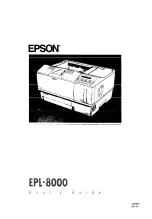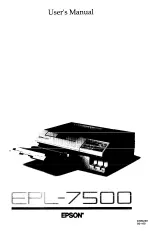
Lexmark
T430dn
BUYERS LABORATORY INC.
Lab Test Report
© 2004 Buyers Laboratory Inc. WARNING: This material is copyrighted by Buyers Laboratory Inc. and is the sole property of Buyers Laboratory. Duplication of this proprietary report or excerpts from this report, in any manner,
whether printed or electronic (including, but not limited to, copying, faxing, scanning or use on a fax-back system), is illegal and strictly forbidden without written permission from Buyers Laboratory. Violators will be prosecuted
to the fullest extent of the law. To purchase reprints of any BLI reports or articles, contact BLI at (201) 488-0404. Buyers Laboratory Inc., 20 Railroad Avenue, Hackensack, NJ 07601. Contact us at [email protected].
11
TEST RESULTS AND OBSERVATIONS
(CONTINUED)
Lexmark T430dn Embedded Web Page
Included software:
The T430dn ships with PCL 6 and PostScript 3
print drivers, as well as the MarkVision Profes-
sional management utility.
Administrative Utilities
MarkVision Professional is a very flexible and
powerful network management tool, which can
identify Lexmark and non-Lexmark printers
on a network; documentation on MarkVision
Professional lists other printers with which the
utility is compatible. Like other Lexmark printers,
the T430dn is designed to be alert-based, allowing
the printer to report errors to the management
utility when they occur so that users do not have to
proactively request status information (this should
help reduce network traffic).
At the workstation, end users may access
MarkVision simply by using their Web browser
or they may install a client module of MarkVision
Professional. Capabilities of the powerful
utility include the ability to limit access to the
MarkVision Professional Web server by assigning
privileges to individual users and/or groups, and
to create sub-folders of the “All Devices” folder
with filters attached (such as low on toner, so
that any device reporting low toner will appear
in that folder). MarkVision Professional 10.2 also
includes enhanced user authentication and security
features to limit unauthorized access, such as
print server password conformance for supported
devices, LDAP user authentication utilizing SSL
or Kerberos and Print Permissions Technology that
allows the administrator to restrict access to certain
printer functions.
































